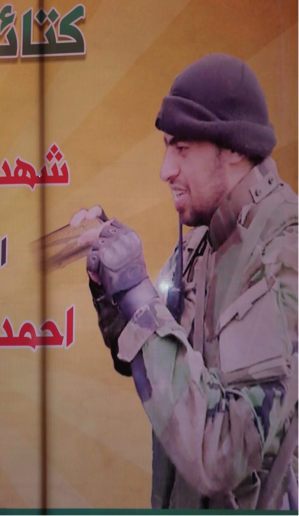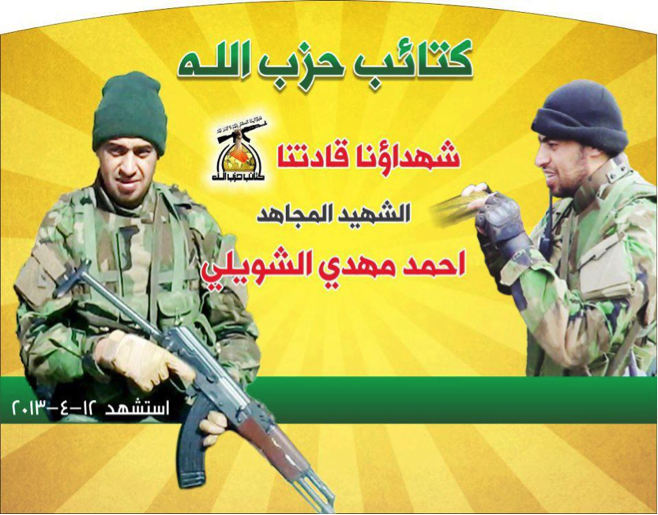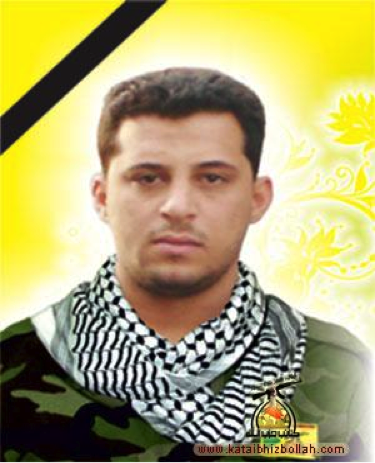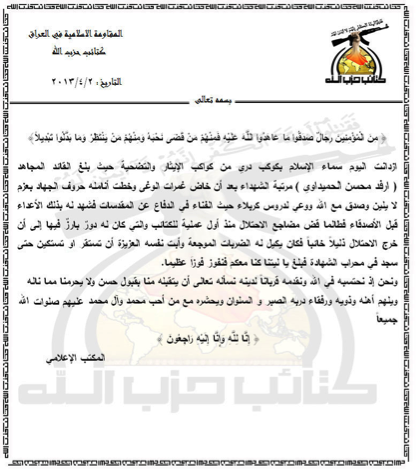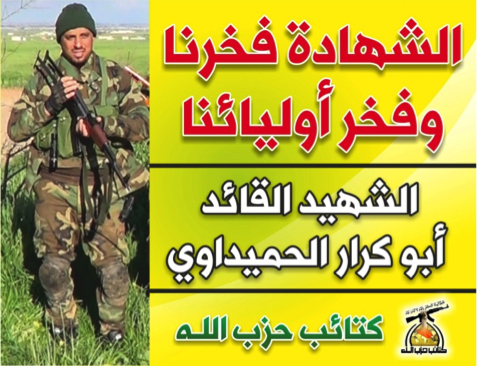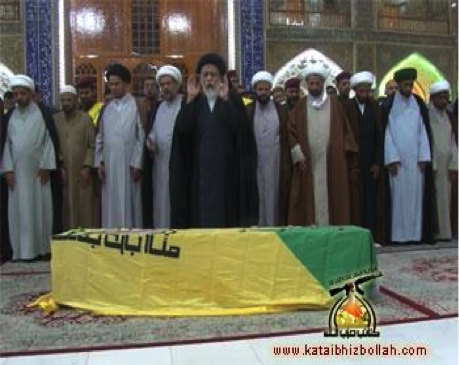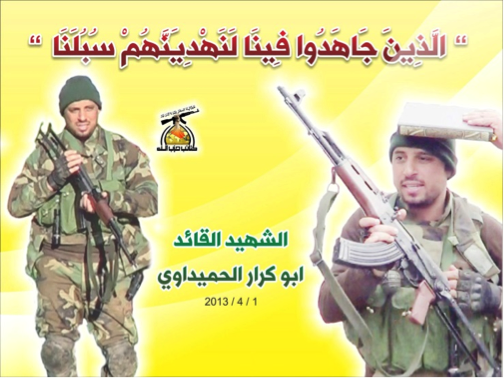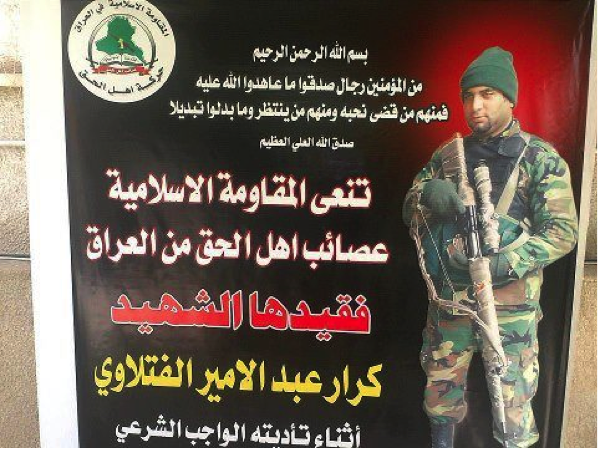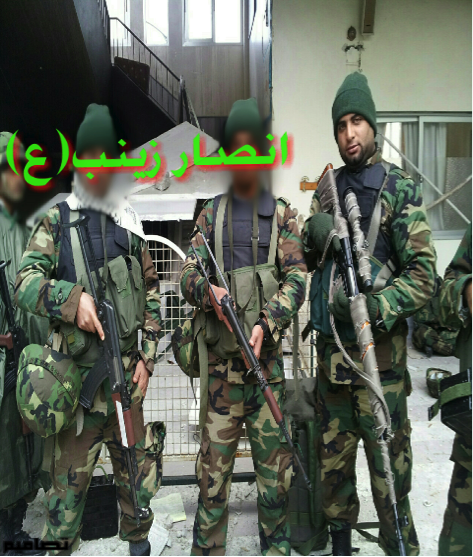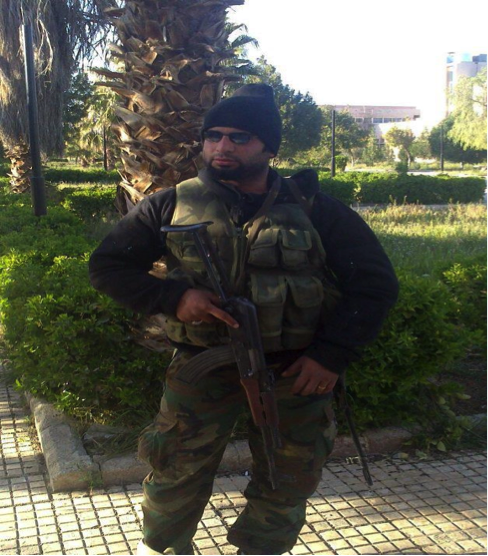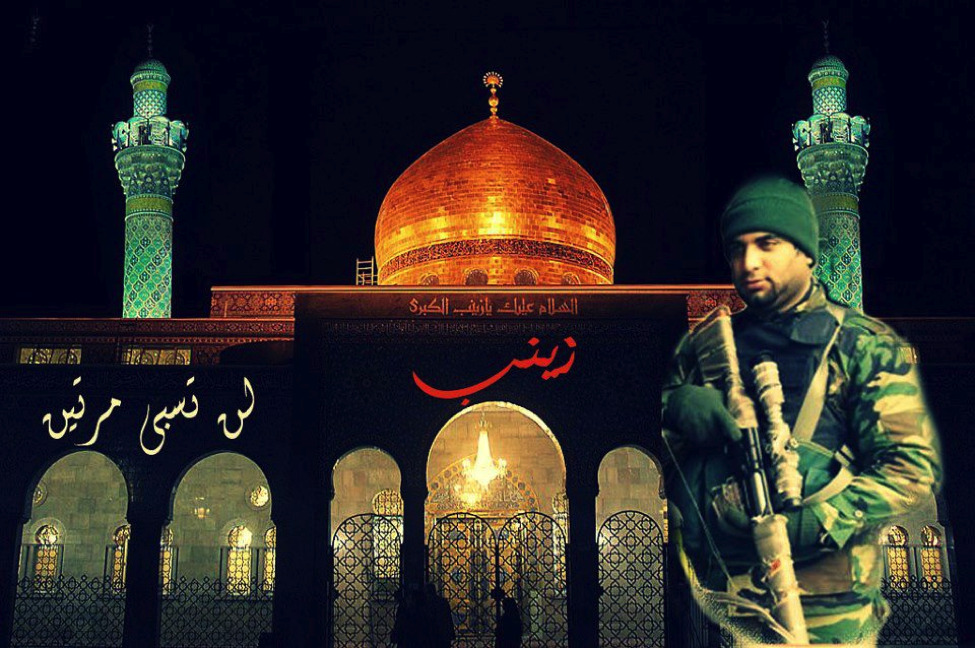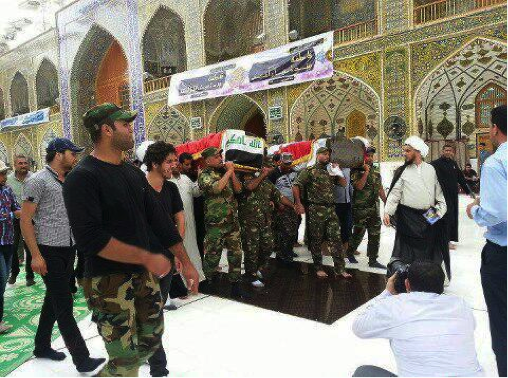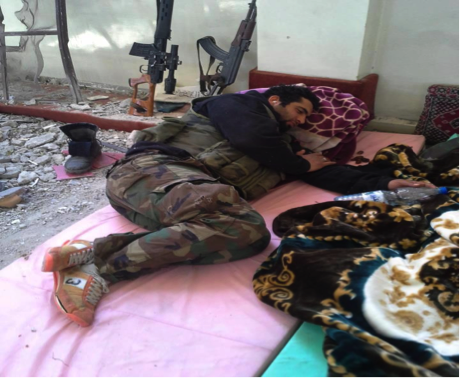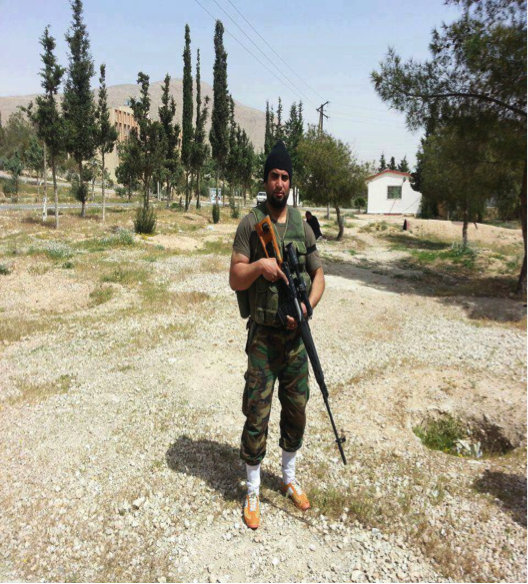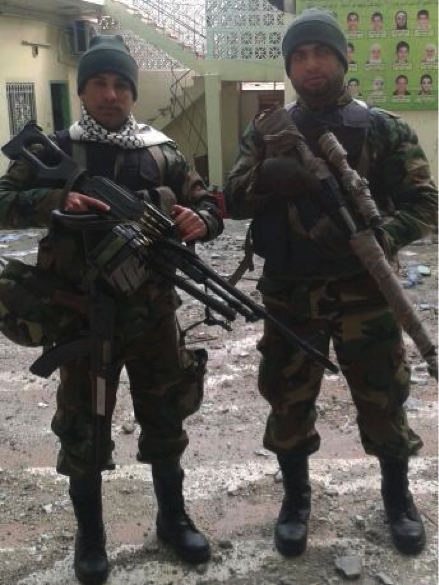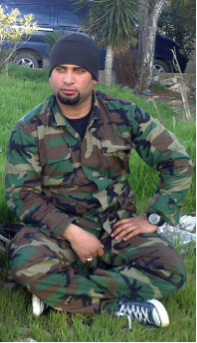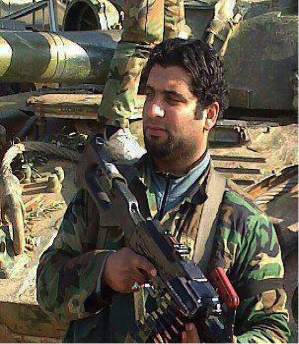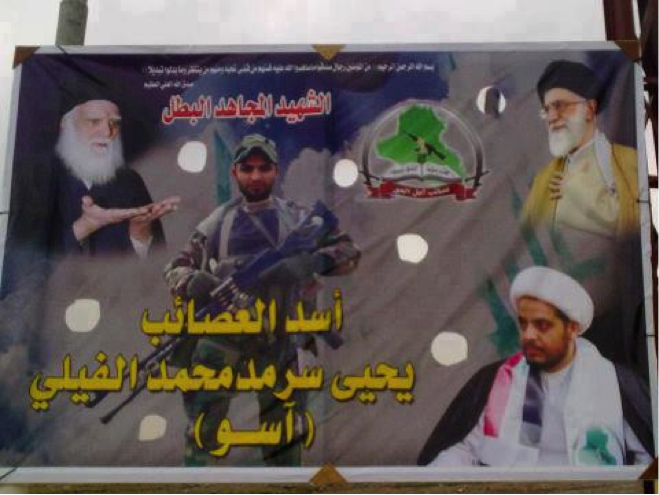NOTE: For prior parts in the Hizballah Cavalcade series you can view an archive of it all here.
—
What is the Liwa’a Abu Fadl al-Abbas (LAFA)?: Assessing Syria’s Shia “International Brigade” Through Their Social Media Presence
By Phillip Smyth
Click here for a PDF version of this post
Making its first appearances in the fall of 2012, Liwa’a Abu Fadl al-Abbas (Abu Fadl al-Abbas Brigades or LAFA) represents a new addition to the Syrian battlefield and serves as another example of increased sectarianism in the Syrian Civil War. The organization claims its role is to defend the Sayida Zaynab Shrine and surrounding Shia populated neighborhoods located in southern Damascus.[1] The group is made-up of a mixture of a small number of native Syrian Shia with a majority of foreign Shia Muslim fighters.
LAFA has also maintained an outward appearance which mirrors the same type of spirit once found with the volunteer International Brigades during the Spanish Civil War. Despite the presented narrative, this does not necessitate the group is an ad hoc collection of individual Shia Muslims. The group heavily utilizes fighters originating from Iranian-backed organizations (such as Iraq’s Kata’ib Hizballah and Asa’ib Ahl al-Haq), has uniformed personnel, new weapons, a recognizable leadership structure, and openly identifies with Lebanese Hizballah. These factors point to an extremely organized fighting group and deeper levels of Iranian involvement in the organization.
Unlike larger and more established militant Shia Islamist groups such as Lebanon’s Hizballah or Iraq’s Asa’ib Ahl al-Haq, LAFA has no official website or official online forums. The group finds most of its internet representation through a mixture of quasi-official Facebook pages and YouTube stations. In fact, for the Western and Arabic-language press, LAFA’s existence only came to light when a YouTube music video featuring the group’s fighters was made public.[2] Thus, fifteen pro-LAFA Facebook pages, five Facebook pages associated with Lebanese Hizballah, one Hizballah forum, three pro-Muqtada al-Sadr forums, and five pro-LAFA/pro-Hizballah YouTube stations were reviewed for this study.
“Labayka Ya Zaynab!”: Abu Fadl al-Abbas’s Messaging Campaign & Narrative
Designating itself firmly as a Shia militant organization, LAFA utilizes Shia Islamic imagery, slogans, and other symbols to push its case to Shia Muslims. As stated by the group and its supporters, the Abu Fadl al-Abbas Brigade’s main purpose is to “Defend the Saydah Zaynab Shrine”. Their specified raison d’etre, immediately projects an image of “Protectors” simply reacting to a foe bent on the destruction of Shi’ism.
A common chant heard and written by LAFA members and supporters is “Labayka Ya Zaynab!” (“We are here for you Zaynab”). The slogan directly refers to the defense of the Zaynab Shrine and has also become a rallying cry for Shia Islamist groups fighting in Syria. At funerals held for Lebanese Hizballah members killed in Syria, the same slogan regularly chanted. LAFA militants regularly say the phrase as they engage Syrian rebel forces. The cry reinforces the line that the group’s sole function is the protection of the Zaynab Shrine and that they are worthy of praise for their sacrifice for the entirety of Shi’ism.
The Shia Symbolism behind LAFA’s name originates with the story of Abu Fadl al-Abbas (A.K.A. Abbas Ibn Ali). Abu Fadl al-Abbas was a trusted and brave warrior who fought for his father, Imam Ali ibn Abi Talib.[3] Serving with Imam Husayn’s forces during the religiously important and historic Battle of Karbala, Abu Fadl al-Abbas had both of his arms cut off attempting to collect water for his besieged compatriots. Symbolizing his willingness to sacrifice and loyalty, until he was killed, Abbas continued to carry water back to his forces using his mouth.[4]
LAFA has attempted to utilize this story in their propaganda material. The image of a severed arm was actually featured in a number of pro-LAFA videos.[5] Additionally, the green flag on LAFA’s logo represents the flag Abu Fadl al-Abbas carried when he acted as flag bearer for Imam Husayn during the Battle of Karbala.
The story taps into the very roots of the Sunni-Shia split. For Shia, the Battle of Karbala symbolizes their rejection of oppressive Sunni rule. Combined with what appears to be a clear Sunni Islamist drive to dislodge Shia presence in Syria, for many Shia the story resonates in the contemporary sense. Since the shrine and neighborhoods LAFA claims to protect are surrounded by pockets of Syrian rebels, the field of battle is also reminiscent of the Battle of Karbala. With these prevailing themes, LAFA taps into the culturally important concept of Shia self-sacrifice. These themes were used extensively by Iran’s current leadership and has been refered to by some scholars as the, “Karbala narrative”.[6]
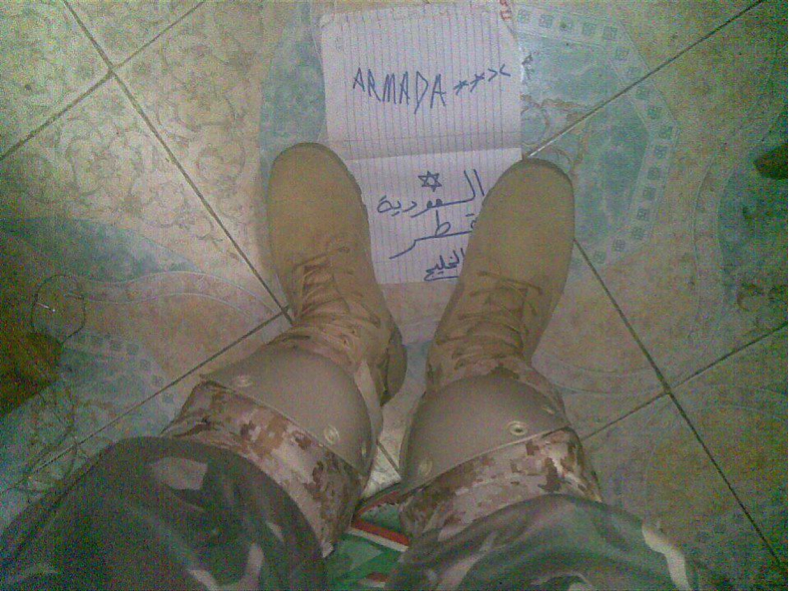
Figure 1: Another example of LAFA pushing the “Israel/Jewish-Sunni Gulf Arab” or “Israel/Jewish-Takfiri” conspiracy narrative. A LAFA member steps on a paper reading “Al-Saudia/Qatar/Al-Khaleej” (“Saudi, Qatar, the Gulf”) which are positioned under a Star of David. (Source: Facebook).
While LAFA describes its enemy as “Takfiris” or as “Gulf and Israeli” supported enemies, it neither specifically targets Sunni Muslims as a whole, nor marks the entire sect as apostates. Instead, the group brands its Syrian rebel enemies (no matter their political orientation, tactics utilized, or how secular) as “Wahhabists”, “Terrorists” and/or “Extremists”. Moreover, a number of online LAFA supporters refer to all Syrian rebels as “Kafirun” (“infidels”).
A major propaganda event for LAFA occurred when one of its members raised a red banner over the Zaynab Shrine’s golden dome. The message portrayal appeared to be one of valiantly opposing their Syrian rebel enemy and of embodying the flag-bearing role of Abu Fadl al-Abbas. The raising of the red banner signified willingness to become a martyr since it is the symbolic color for martyrdom in Shi’ism.[7] At the time of this writing, the film of the LAFA militant raising the red flag has been re-edited into eight YouTube films.

Figure 2: LAFA members and supporters raise a red banner reading “Ya Zaynab” (“O Zaynab”) over the shrine. (Source: Facebook).
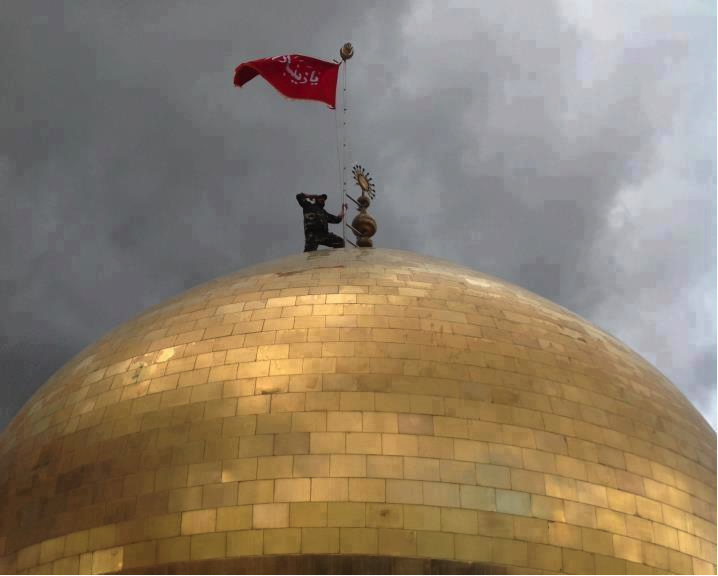
Figure 3: A photo of a LAFA member raises the red flag reading, “Ya Zaynab” (“O Zaynab”). (Source: Facebook).
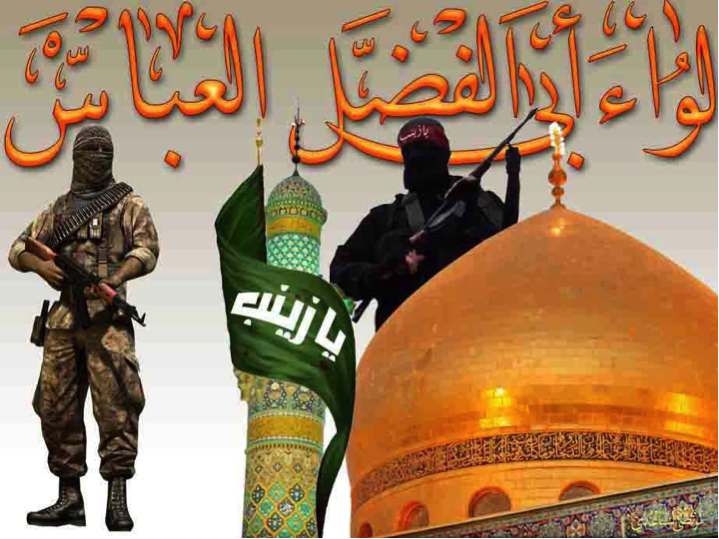
Figure 4: An example of the Zaynab Shrine in LAFA propaganda. “Liwa’a Abu Fadl Al-Abbas” is written in Arabic calligraphy. Wrapped around the shrine’s minaret is a flag reading, “Ya Zaynab” (“O Zaynab”). (Source: Facebook).
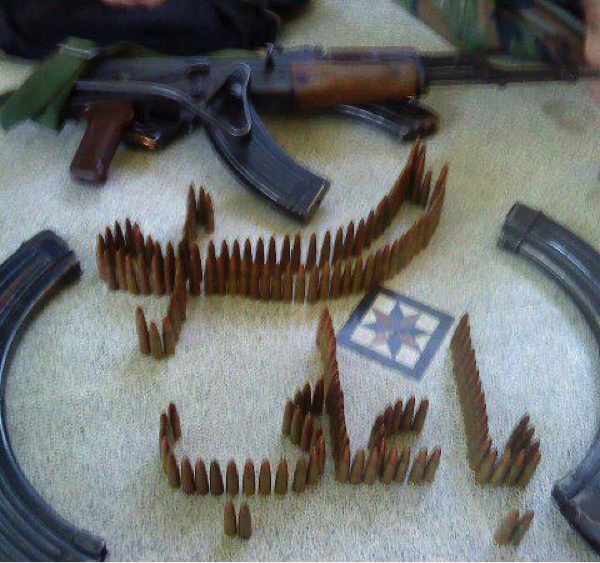
Figure 5: 7.62×39 rounds (the round used in the AK-47) have been arranged to spell, “Ya Ali” (O, Ali). The Ali reference refers to Imam Ali Ibn Abi Talib. For the Shia, he is considered the first Imam, his family. The ammunition also forms the Zulfiqar, Ali’s double pointed sword, which represents divinely guided power. (Source: Facebook).
Iranian-Backed Groups & Liwa’a Abu Fadl al-Abbas
The foreign fighter element of Liwa’a Abu Fadl al-Abbas has caught the attention of many analyzing the group. A key factor for new militia is that the majority of fighters killed come from both Iraq and Lebanon. The original parties they were aligned with were either beholden to Iranian radical ideology or created with Iranian aid. This factor points to a more direct Iranian involvement with the organization’s creation.
There has been a preponderance of reports citing large number of Iraqi Shia who have joined the group. Pro-LAFA social media is rife with many individuals praising Iraqi Shia efforts with the group. However, there have also been numerous Lebanese Shia—mainly Hizballah members—who fight or have fought with the group.
Journalist Nicholas Blanford identified that Hizballah involvement with the militia could be determined due to their utilization of semi-automatic fire, “a technique taught to Hezbollah combatants to improve accuracy and save ammunition”.[8] The clothing worn by LAFA members also points to another Hizballah-LAFA connection.[9] However, the links between the two organizations are far deeper than similar weapons techniques and uniforms.
As far back as August, 2012, there was unconfirmed evidence that Hizballah had positioned itself around the Zaynab shrine. At that time, Hassan Selim Meqdad, a Lebanese Shia was captured by Syrian rebels and was accused of being a Hizballah operative fighting in Syria. His family and Hizballah both denied the claims.[10] When Meqdad was filmed, he told his captors he was one







